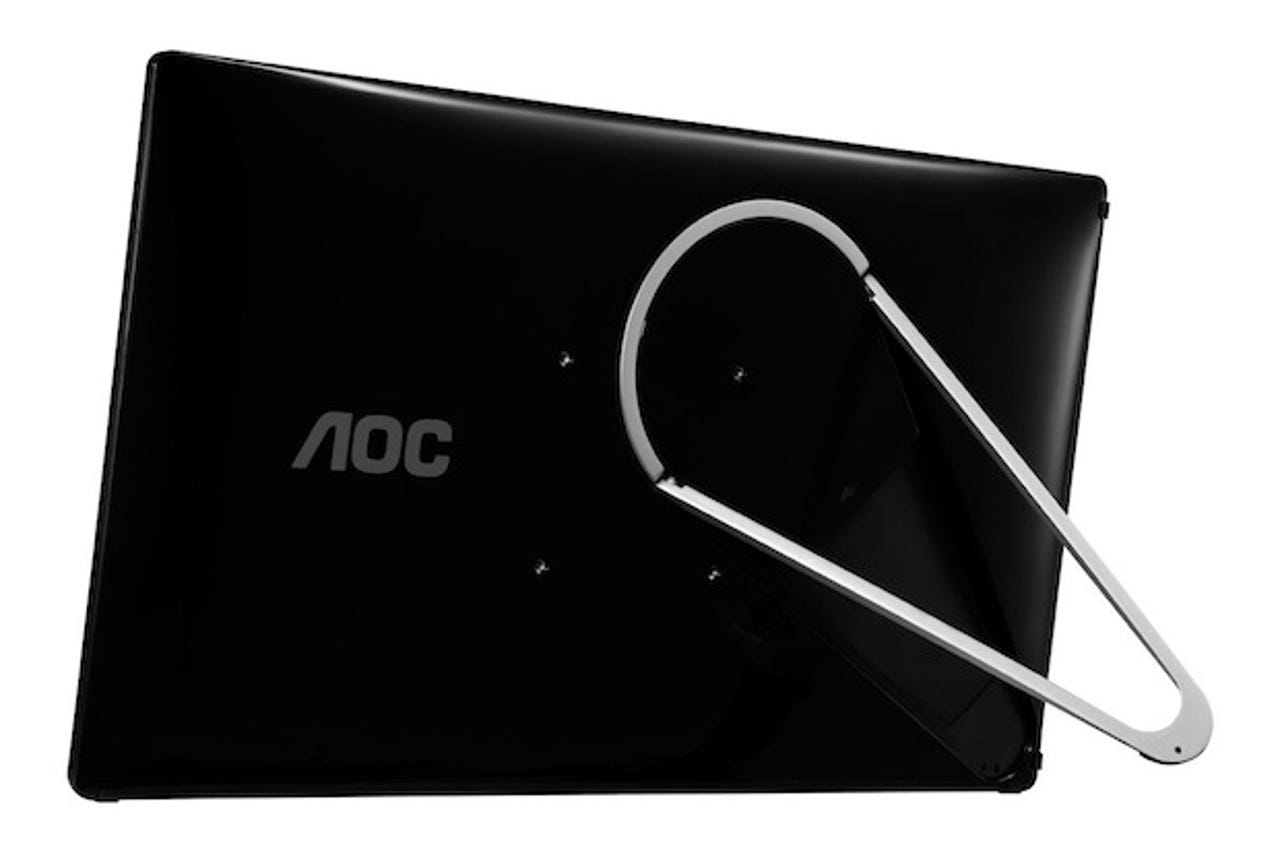Hands on with the AOC E1759fwu USB 3 monitor


But what if you could bring that second monitor with you wherever you went? That's the idea behind AOC's 17-inch USB-connected E1759fwu portable monitor. It gives you a second screen that's light enough to carry around with you - but does it make sense to carry a second screen around?
At 1.2kg (2.7 pounds), the screen is light enough to not weigh down your laptop bag too much. But with dimensions of 16-inches by 10-inches, to give you a 17-inch screen with a 16:9 ratio, it's a little too large to slip into a backpack.
The monitor is less than 1-inch thick, and comes with a slip-on case to protect it. It comes with a handy fold-out stand that lets you use it in landscape or portrait view, and the accelerometer flips the display automatically, so you can stand it up one way to look at a big spreadsheet and the other way to look at a web page or a long document.
You don't need to lug a power supply round with you, though; both power and the display signal go over a single USB cable. It's nice that the cable is long enough that you don't have to place the screen right next to your laptop, and the cable fits neatly under the fold-out stand so it's not sticking out at an angle that's going to get knocked.
The cable also has a second USB plug attached, in case your laptop USB port doesn't put out enough power for the screen. The Surface Pro 3, for example, does not. The screen only worked with our Surface Pro 3 when we put it in the Surface Dock.
But on an older Lenovo ThinkPad, we didn't need the second USB port to power the screen. If you have a recent notebook that's designed to use as little power as possible, to use the E1759fwu you might have to carry a powered USB hub, which isn't very practical. But older notebooks with low resolution are more likely to need a second screen anyway.
The biggest drawback of the E1759fwu screen is the 1600 by 900 resolution. That's a big step up from an old notebook with a 1440 by 900 screen and if you have an older notebook you'll appreciate it.
But it doesn't look at all impressive next to the 2160 by 1440 of a Surface Pro 3, and it's awkward that every window you drag onto the screen will need resizing to fit. The screen is also a little slow (the response time is 10ms, rather than the usual 5ms) which you'll notice if you're trying to mouse around an interface at speed. And of course this isn't a touch screen; if your notebook has touch, you may find it frustrating to have to switch to a mouse for your extra screen.
Setup is more complicated than it ought to be, too. When you first plug in the screen, Windows detects it and loads a DisplayLink driver, but you may also need to install the drivers from the CD if you want screen rotation to work (the setup guide tells you to install the full driver, and we needed to on one notebook but not on another).
Given that the notebooks and tablets you're extending with this screen might not have a CD drive, that's a little awkward. Even worse, the AOC app presents an animated Flash intro that runs full screen with no exit button, and offers a link that lets you pick the monitor driver - which just opens an Explorer window to the folder which the setup program is in. Once you install that - and restart your PC and let setup carry on installing - you'll see your desktop extended onto the screen and you can get to work.You'll probably want to adjust the screen's contrast and brightness, as the defaults make things look rather washed out (particularly grey scale and high contrast images). You can do that with the DisplayLink utility, which duplicates most of the Windows display control panel settings. We also had some problems with glare and viewing angle, especially in portrait mode. You can adjust the stand to change the angle because it just folds out, but not always enough to deal with the problem.
Image quality is pretty good; colours are bright and fairly well saturated, but green shades are less accurate than reds and blues on screen. Whether you think the image looks crisp and clear depends on what you're comparing it to: next to a five-year-old ThinkPad, it looks pretty good; next to a Surface Pro 3, it looks grainy and disappointing.
But while the screen doesn't offer full HD resolution (that needs 1920 by 1080), the size makes it a nice screen for watching movies on whatever you're driving it from, and it would also be great for running a presentation while you look at your own screen for your notes.
USB monitors don't usually have particularly good picture quality and the screen quality of the AOC E1759fwu is actually better than many other USB monitors. Getting the price down to just over £100 and being able to connect a display over USB means it's both affordable and convenient (once you struggle through the installation).
If you're used to a great laptop screen it won't blow you away, but if you're not, it's a nice way of spreading out on screen.
Read more